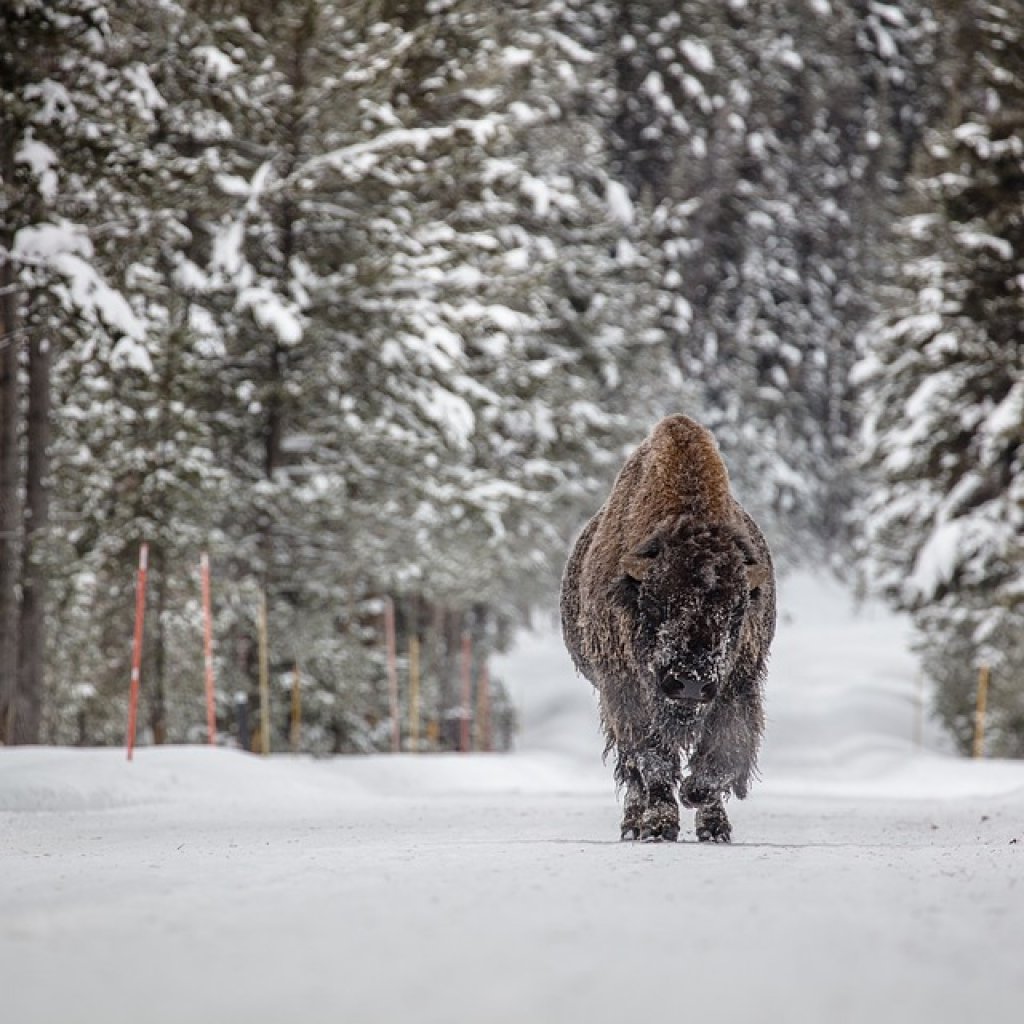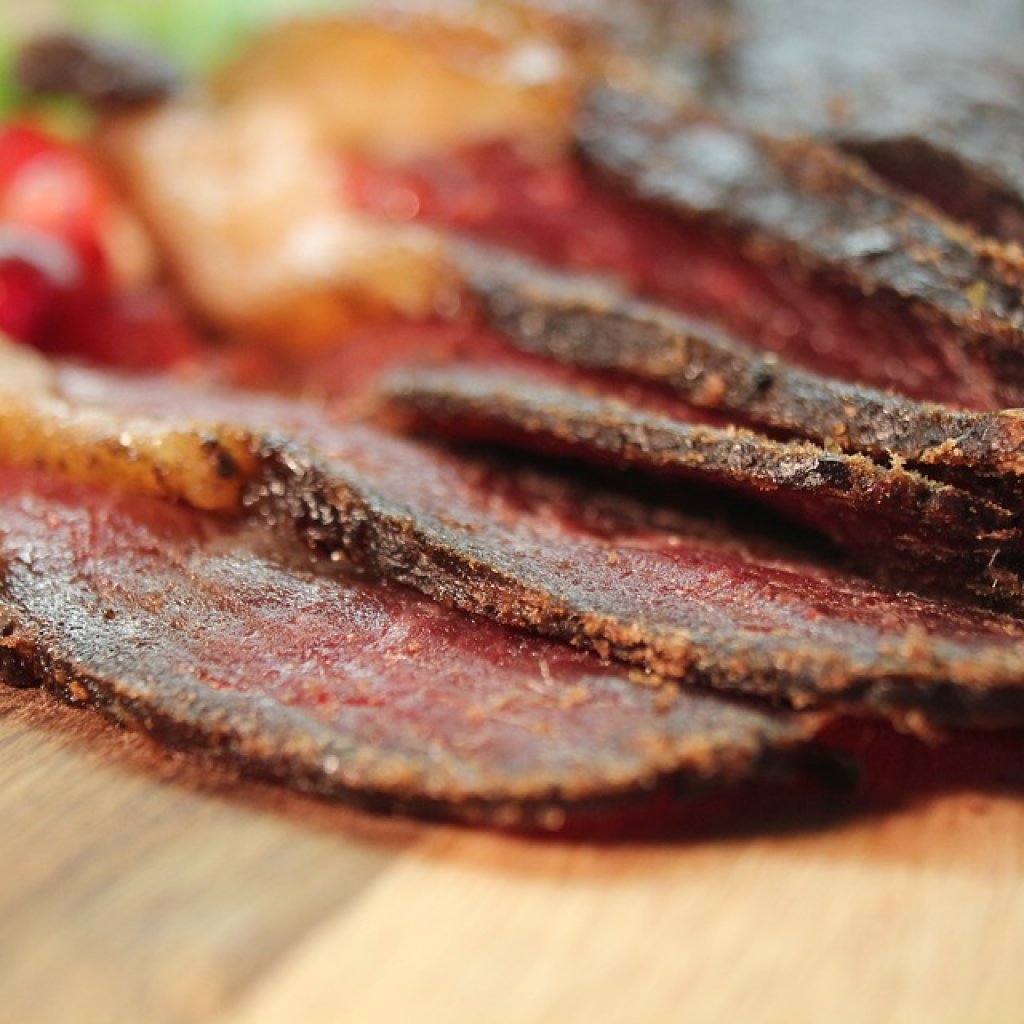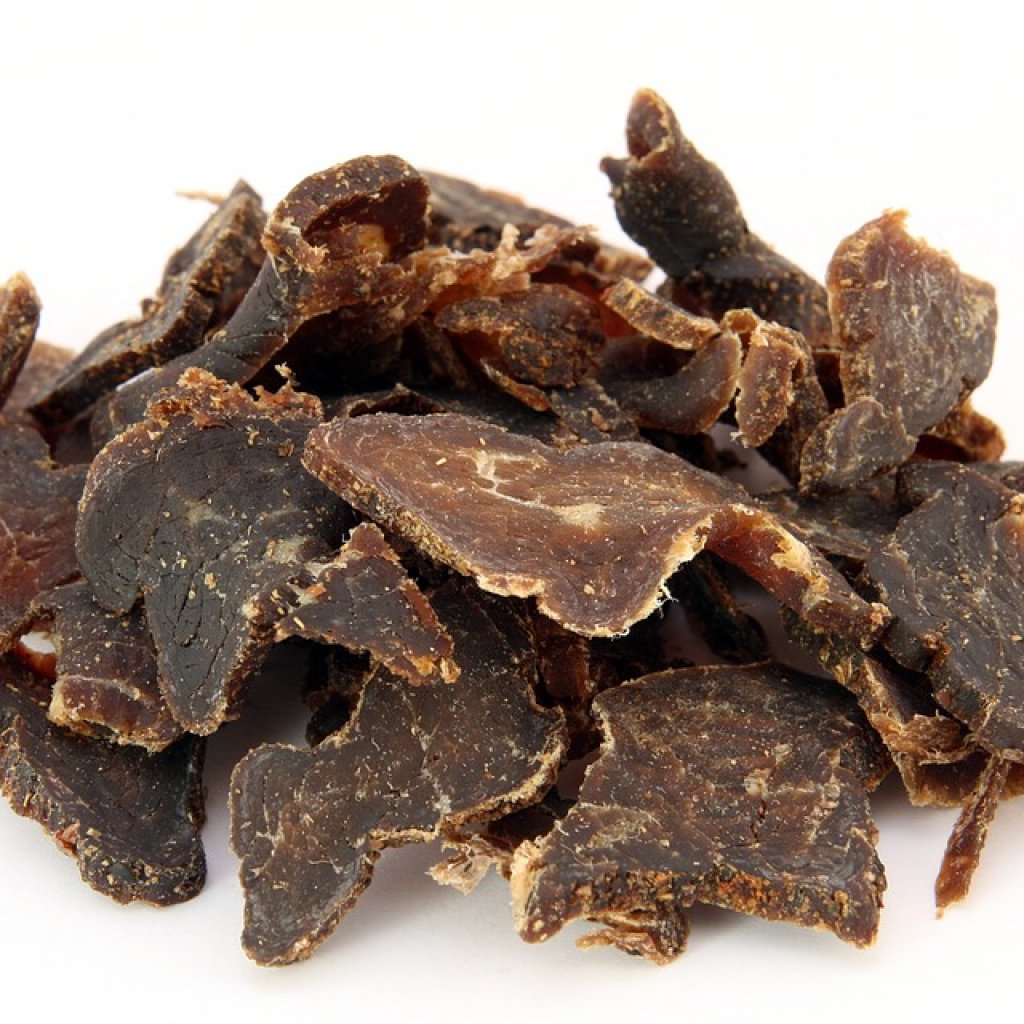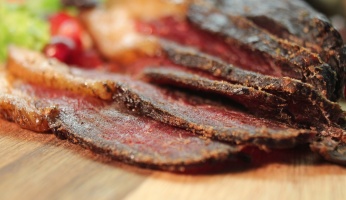Survival Foods: How to Make Biltong
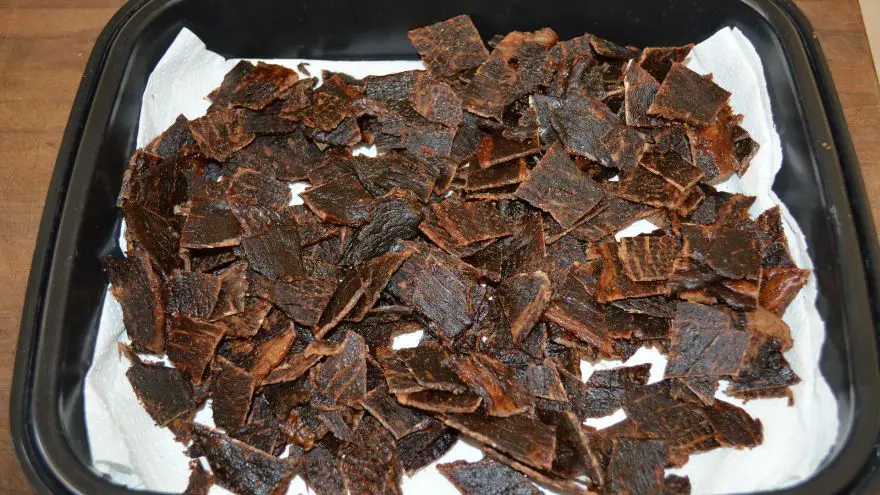 Survival Foods: How to Make Biltong
thegearhunt.com
Survival Foods: How to Make Biltong
thegearhunt.com
While most of us have never even heard of biltong, there are some of us who know that it’s another form of beef jerky, sort of. If you are into preparing for the coming apocalypse, whichever form it takes, then knowing about biltong and how to make it is something you want to pay attention too.
There are many, many dried foods out there that can help you survive an emergency situation, some of them include deer jerky, beef jerky, pemmican, and more, and you really need to know how to make them all, there average shelf lives, and what health benefits they have for you and your family.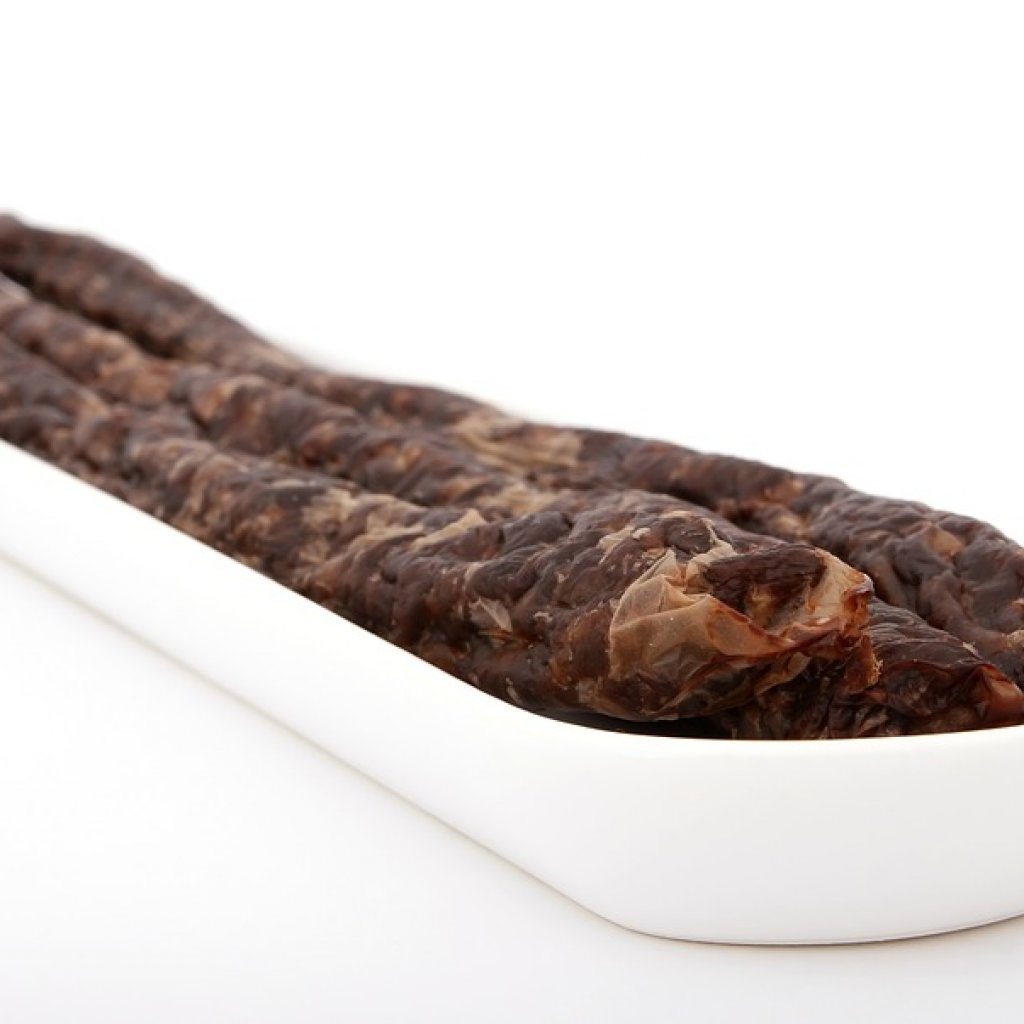
Being a prepper isn’t just about making sure that your family is fed during a disaster situation, it’s also about making sure your family is safe and protected from harm. Remember, once the grid goes down, stores are going to run out of food pretty quickly and that’s when humanity is going to turn ugly and desperate, as they try to protect and feed the ones they love.
That’s when you might have to leave the comfort of the home you’ve known all of your life and every modern convenience to get your party to safety. That’s where foods like biltong come in handy with their portability, proteins, and long shelf lives.
In this blog, we will talk about how to make biltong and a few of the things you should know about it as well, such as the difference between it and beef jerky. We might also go into a few of the things that you need to pack in your bug out bag to ensure that you’re able to survive any disaster that heads your way.
So, if you want to learn more about being a prepper and how to make biltong as well, grab your pen and pad and let’s get started on this journey together.
What is Biltong?
Biltong is actually pretty close to the more popular beef jerky. It’s a snack that many people love and is dried out in much the same way as any other type of jerky out there. It’s a type of dried and cured meat that is extremely popular in the following countries:
- South Africa
- Zimbabwe
- Namibia
- Bosnia
There are different kinds of meats used to make biltong, according to the region you live in and it can have a shelf life of up to five years if made properly. That’s a great thing to know if you are prepping for a disaster to happen.
Many people think that biltong and beef jerky are the same things, because of their appearance and the fact that they are dried meats. However, there are a few differences between them that bear pointing out. There are actually three main differences in beef jerky and biltong, we will go into those differences below in the second section of our blog. Either, of course, is great for survival situations, so the choice is up to you.
The Main Differences Between Biltong and Beef Jerky
As previously stated, there are three main differences between biltong and beef jerky. Read on below to find out what those differences are.
They Use Different Secondary Ingredients
While beef jerky and biltong use the same main ingredients, the secondary ingredients are quite different.
Jerky is often smoked, where biltong is never smoked, giving them very different flavor profiles.
Biltong is cut into strips that are one inch wide, even thicker at times, while beef jerky is cut thin, so that is a difference as well. Since biltong is cut thicker it has a slower drying time as well.
They have Different Distinctive Taste Profiles
Since there are certain vinegar and spices added to the mix during the biltong process, it has a different flavor than beef jerky.
While both jerky and biltong are dried, biltong is flavored with vinegar, salt, and spices, while jerky is missing the vinegar and salt.
Jerky has pretty much no fat, whereas biltong as it is made of different cuts of meat, has fat, some as much as 50 percent.
Depending on how you decide to prepare it, biltong can be dry and crumbly (good for recipes), or soft and chewy, something beef jerky is not.
They have Different Production Processes
One of the most interesting differences in biltong and jerky is that biltong is made without heat, while jerky is usually in a dehydrator drying out for between six and 12 hours.
Biltong is air dried on hooks for about a week, jerky dries out due to the heat of the dehydrator.
The use of vinegar in biltong isn’t just to add flavor, it’s to help in the drying out process and to keep flies at bay as it hangs on hooks to dry out.
Those are quite a few differences if you think about it. Whether you decide to go with beef jerky, biltong, or maybe both, they both have distinctive flavor profiles that are amazing. However, it does seem that preparing beef jerky is a much faster process, so if you’re in a hurry or worried that a disaster is coming, it might be best to do your beef jerky first.
What You Need to Make Biltong with a Five-Year Shelf Life
After hearing about it, who wouldn’t want to try biltong? It’s not easy to get in countries where it isn’t super popular, so you are going to need to learn to make it on your own. The fact that this is a recipe with a five-year shelf life only makes it that much better. What you need is listed below.
What You Need
- 2 pounds of lean beef or wild game
- Two cups of brown sugar softened
- 3 cups of sea salt that is very plump
- 1 teaspoon bicarbonate soda
- Two tablespoons of crushed or ground peppercorns
- 110 ML of Worchester sauce
- 5 cups of vinegar
- 4 tablespoons of ground coriander seeds
All of this might sound pretty daunting at first, and it is for sure a process, but it’s well worth it in the long run.
Once you cut your strips and mix your spices together, put everything in the fridge to get cold and soak for at least 8 hours, take them out and then soak them in the vinegar mixture for at least another 15 minutes. After you remove the strips and chunks, you want to squeeze all of the moisture out of them, after being sure to rinse away all of the salt gathered on them.
Now, that you have them ready to dry, there are two drying methods for you to choose from. Those are talked about below as well.
The Oven Drying Method
This is a modern method, of course, and many people tend to go this more modern route today. The best way to dry biltong in the oven is to do so on low heat, leaving the door open at some point during the 8-hour drying process to let out the heat.
You can also use a dehydrator, just make sure to follow the instructions carefully.
The Traditional Drying Method
Then there is the traditional drying method that has been around and proven to work well for centuries now. This method works really well in humid climates. Please make sure that the room you use is free of flies and that birds can’t get into peck at the meat as it dries. If the air circulation is good in the room, then your biltong should dry quickly. There are two traditional methods to choose from, we will talk about both of them below.
Hang Drying
Hang drying should only be used if you’re drying out large pieces of biltong. There are trolleys that can be bought that will make the hanging easier and the drying time faster. Just make sure that you space the chunks of biltong apart because them being too close together will delay drying and make it take longer.
Rack Drying
Another traditional method is called rack drying. Racks look pretty much like the racks in your oven, but some come with wire meshing as well. This is the perfect method for smaller biltong chunks, crisps, or the smaller sticks. Make sure that you toss it in eight hours for the best results. This is one of the more popular ways and works well to produce a flavorful snack for your family or to keep you from starving in a survival situation.
These are the methods for drying out biltong once you have made the recipe above. Next, we will learn how to extend the shelf life of this tasty treat as well.
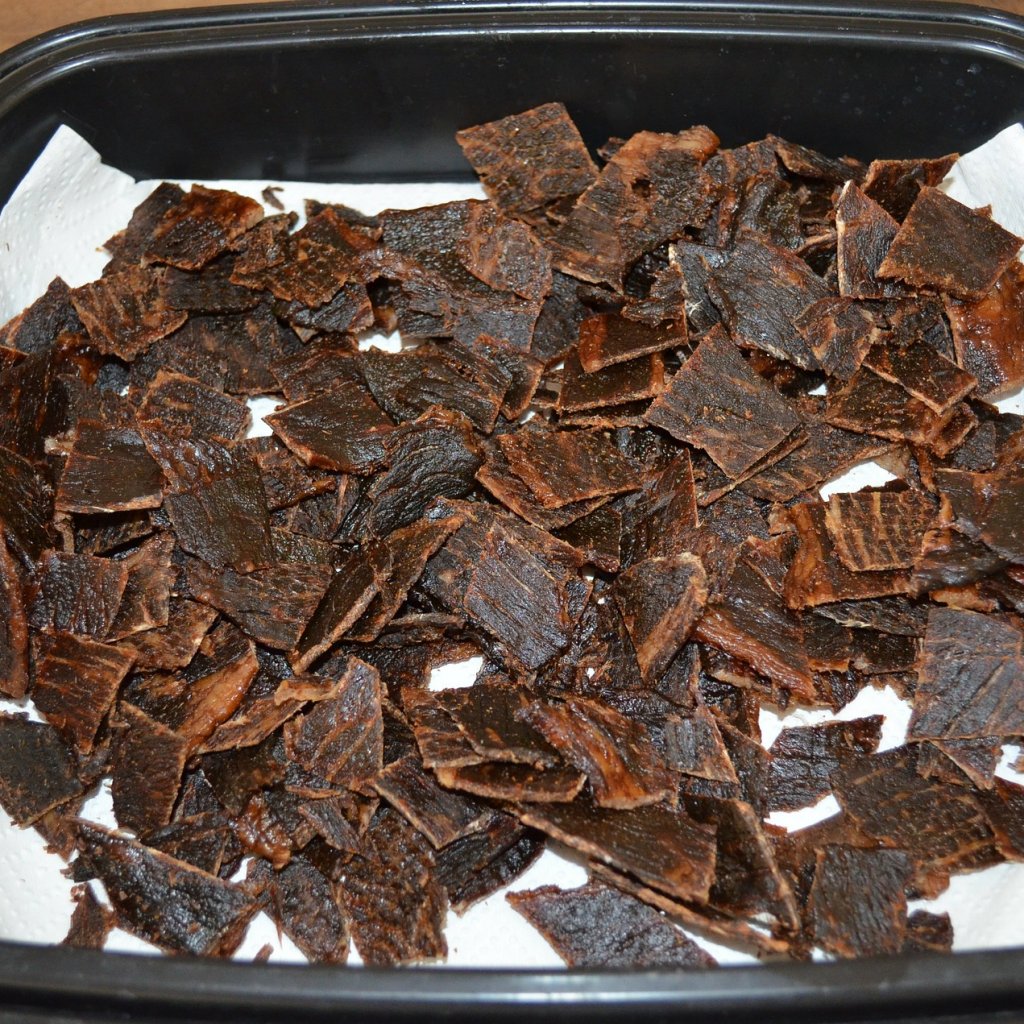
How do You Improve the Shelf Life of Biltong?
A good rule of thumb to follow is that the shelf life of biltong should be as long as the biltong is dry. It’s best to store it naturally so that it can retain its flavor. Store your biltong in an airtight glass canister, and don’t let it get wet because it can cause it to mold, making it where you can’t eat it. That would be a shame, as it is a tasty treat.
How do You Eat Biltong?
There are quite a few ways you can eat biltong. They are listed below.
The most popular option for eating this treat is eating it like beef jerky, right off the drying rack or out of the container you have it stored in for freshness.
It can also be used to top potatoes and makes a great addition to a warm soup when it’s freezing outside.
There are many other ways to enjoy biltong and some recipes you should look into. In our next section, we will list the benefits of biltong as well.
Benefits of Biltong Revealed
- Contains fewer calories than chips or other unhealthy snacks
- Is chockful of protein
- It’s low in carbs
- It has a long shelf life if it is prepared and stored properly
- Most ingredients used to make it are all-natural with no chemicals added
- It is low in fat
- It is gluten-free
- It’s high in vitamin B-12
- Moms use it for children who are teething, something that will invaluable in a survival situation as well
Not to mention the fact that it’s quite tasty and filling. These are some of the benefits of biltong for every survival situation and just as a good healthy snack.
Now, that we know everything there is to know about biltong, what it does, how it tastes and how to make it, let’s move onto what you should pack in your bug out bag because after all, biltong isn’t going to help you survive all on its own.
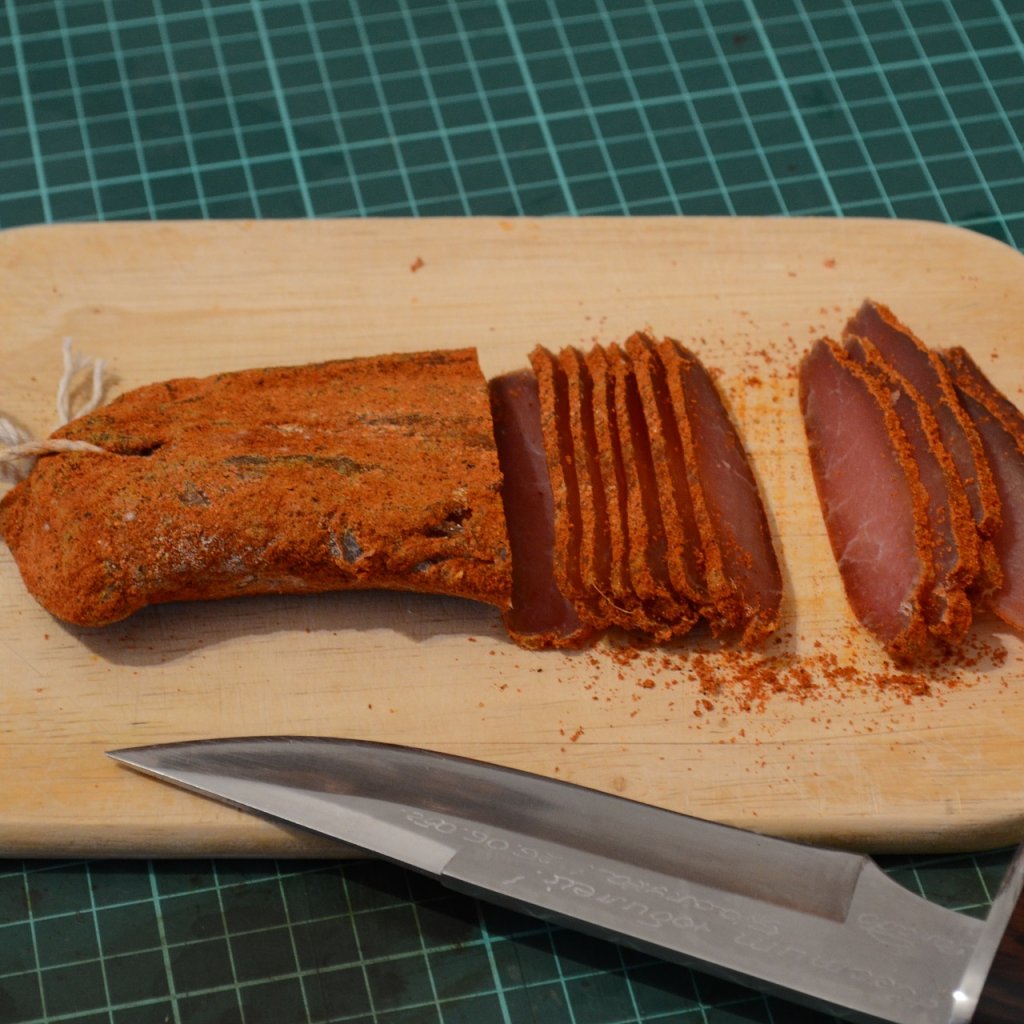
A Few Things not to Forget to Pack in Your “Bug Out” Bag
There are quite a few things that you don’t want to put in your bug out bag, because you may be on the move quite often. However, there are a few basics that you can’t do without as well. We will list them for you below, so you can start getting them together.
- Food
- Medical supplies
- Water
- Sleeping bags, optional because they can weigh you down
- Knife
- Lighting devices
- Firearms
- A compass
- A map
- ID and other documents you might need
- A radio or walkie talkie
These are the basic things that you need to put in your bug out bag to be able to survive and it’s recommended that each person in your party have the same in their bag. Don’t forget matches and other items that you might need as well.
This concludes our blog on survival foods and how to make biltong. Until next time, stay safe and keep preparing, everyone!
Sources:
- Food Lover’s Market: 10 Benefits of Biltong You Might Not Know
- Prepper’s Will: How to Make Biltong with a Shelf Life of Five Years or More
- Bull and Cleaver: What is the Difference Between Biltong and Beef Jerky?





